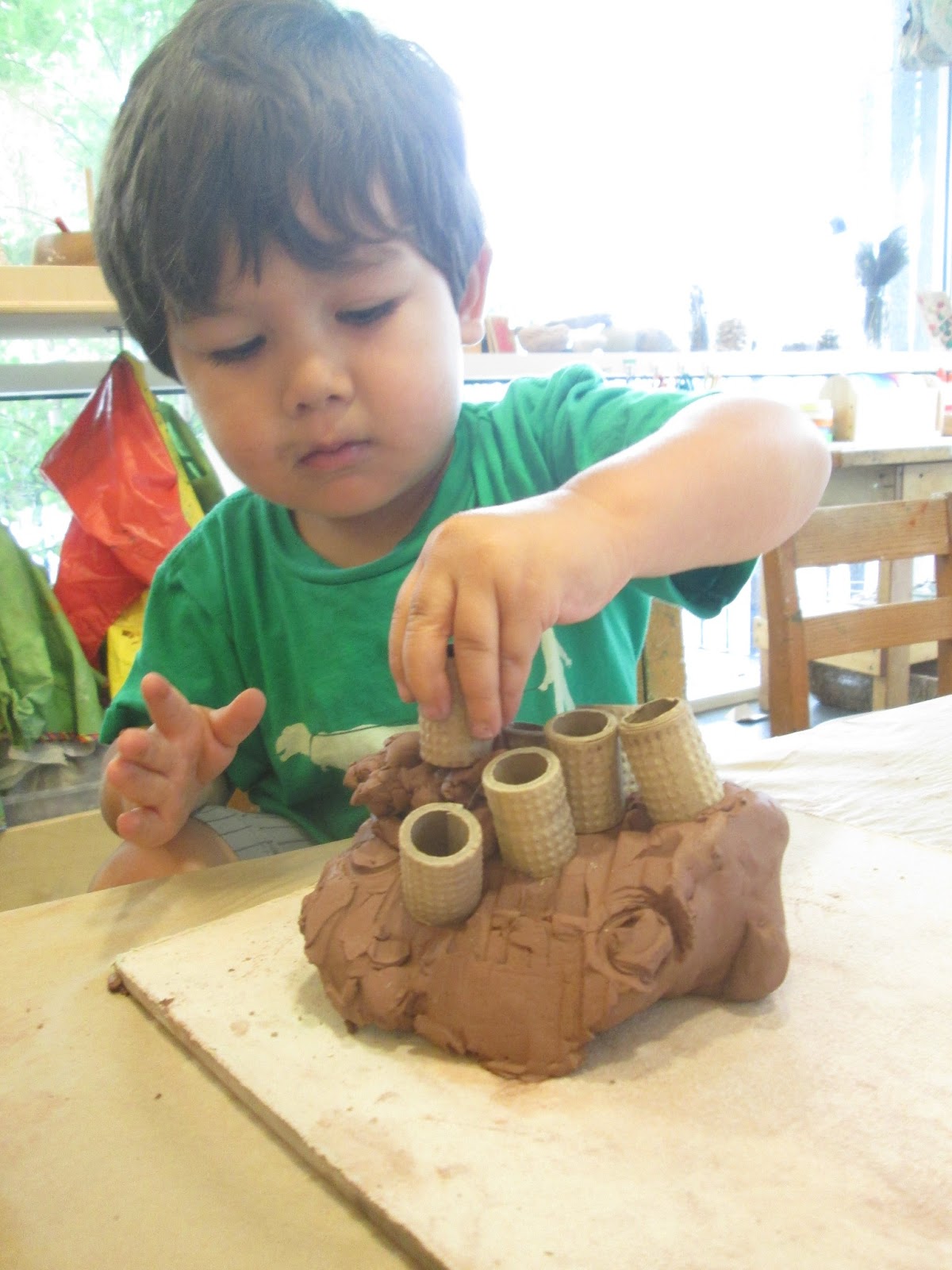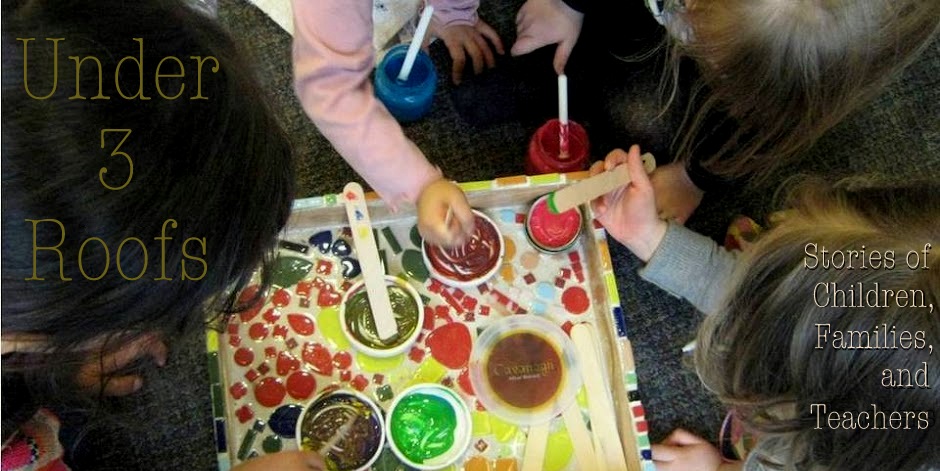
The "new burst of bloom" that inspired this post came from a young toddler, Yoshi, during his most recent visit to the Studio.

At the beginning of the year, during our clay exploration, Yoshi was often more interested in the opportunity that the Studio afforded him for having conversations with adults than in the provocations set out in the space. He loved to ask questions, point out what he saw in the room or out the window, and stay close to the teachers in the room. Although I knew that one piece of this was Yoshi's social nature and general interest in the goings-on of the adults in his life, I also wondered whether the clay, as a material, was less interesting to him than something else might have been.
Fast forward several months to the present:
Yoshi's Studio group has now returned to the clay. When they last entered the Studio, they found one table covered with paper and various drawing implements, and one table housing several boards topped with pieces of red clay. They had access to open shelves with clay tools for them to get as they need, as well as many beautiful and strange objects arranged on other shelves around them.
 After a brief stop at the drawing table, Yoshi moved to the clay and began to work. He found a wooden clay hammer, which he used to give his clay a texture of bumps. He then found a long, thin tool to poke holes deep into the clay. On the back shelves, he found an array of recycled plastic parts, which he pushed into the clay, removed, and rearranged. When some of his friends discovered buttons on a shelf, he gathered some of these to add, followed by some small, recycled tubes. With each iteration of clay decoration, he would say, "Look," standing back to proudly survey his creation, before returning to work on it. He spent over thirty minutes absorbed in concentrated effort with these materials.
After a brief stop at the drawing table, Yoshi moved to the clay and began to work. He found a wooden clay hammer, which he used to give his clay a texture of bumps. He then found a long, thin tool to poke holes deep into the clay. On the back shelves, he found an array of recycled plastic parts, which he pushed into the clay, removed, and rearranged. When some of his friends discovered buttons on a shelf, he gathered some of these to add, followed by some small, recycled tubes. With each iteration of clay decoration, he would say, "Look," standing back to proudly survey his creation, before returning to work on it. He spent over thirty minutes absorbed in concentrated effort with these materials.Those thirty minutes reminded me how important it is that we, as adults and as teachers, not close off the possibilities of children's interests and explorations. Yes, through our observations and the time we spend with them, we are able to understand facets of a child's personality, tastes, and learning. However, these are not static, and should not be written off as such. To use another quote of Dewey's, "The self is not something ready-made, but something in continuous formation through choice of action." All of us - adults and children alike - make choices that add to our experience, our knowledge of the world, and our potential actions at future choosing points. The choice we might make at one juncture is often quite different from that which we make at another, and it is the process of "continuous formation" that occurs between these points that is responsible for this difference.
Among the many inspiring ideas that Kendra has shared from her visit to the schools of Reggio Emilia in Italy, one that stood out to me was that of the "relaunch" - the revisiting of a thread of investigation that lost steam earlier in the year. This classroom's return to clay strikes me as something of a relaunch, and Yoshi's response in particular suggests that he now sees far more potential in the clay than he did the first time around. How glad I am that we returned to this medium and provided Yoshi with the chance to show us his new ideas! We will never learn what a child is capable of if we assume we already know.
Do you have any ideas of an activity, a medium, or an idea to "relaunch"?
Looking back over the past year, where have you seen "bursts of bloom" happen for the children in your life?








